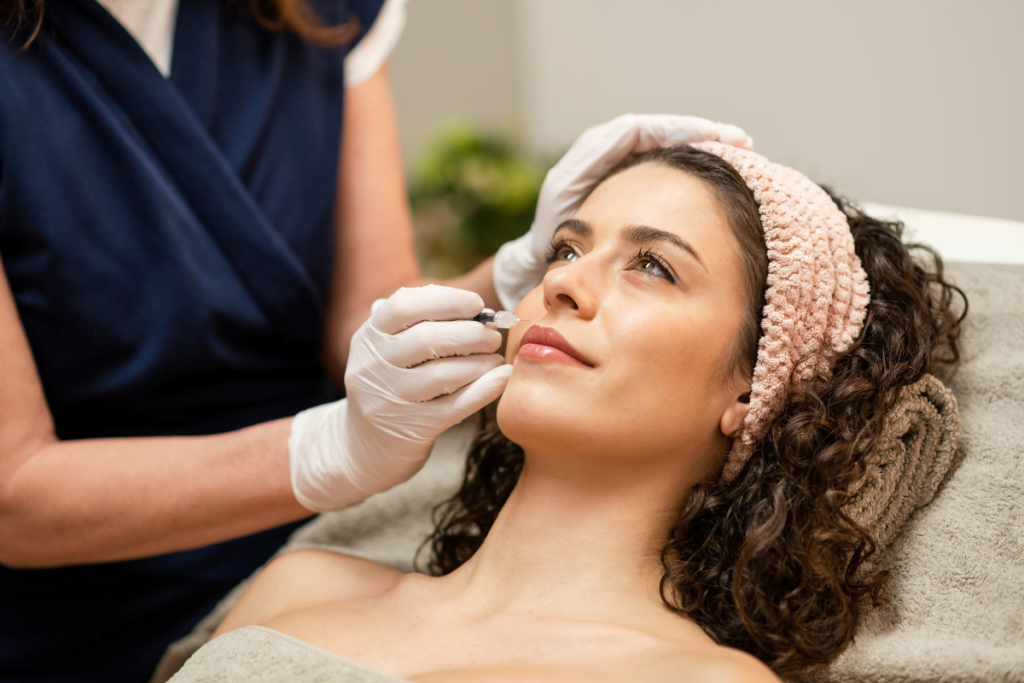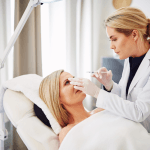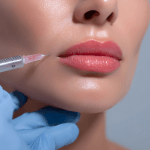Post-procedure care is where outcomes become consistent, not just “good.” In a dermal filler treatment, small variations in counseling, documentation, and follow-up can change how swelling, bruising, and patient satisfaction are interpreted. Your team also needs a repeatable way to capture what was done, what was expected, and what happened afterward.
This guide focuses on clinic-facing aftercare essentials. It covers realistic “before-and-after” framing, common reactions, when to escalate concerns, and practical workflow steps. It is written for licensed healthcare professionals and practice operations teams.
Key Takeaways
- Standardize aftercare instructions and contact pathways.
- Use consistent photo technique and timing language.
- Document product identifiers, sites, and immediate responses.
- Train staff to distinguish expected effects from red flags.
- Align inventory handling with labeling and local policy.
Supplies are provided only to verified licensed healthcare accounts.
Dermal Filler Treatment: Post-Procedure Priorities
Aftercare starts before the first injection. Patients often search for face fillers before and after content and expect a single “final” result. Your job is to set a process expectation: there is an immediate change, an early healing period, and a later stabilization phase. That message reduces anxiety-driven calls and prevents premature “dissolve it” requests driven by normal swelling.
Build a standard, written handout and a consistent verbal script. Keep it neutral and product-agnostic unless the product labeling requires specific guidance. Include what patients may notice, what to avoid based on your clinic protocol, and how to reach your team. If you use multiple materials from your Dermal Fillers Category, align the structure of instructions so staff can deliver them reliably.
Quick tip: Use one templated aftercare note plus a “free-text” field for exceptions.
Aftercare checklist your team can standardize
- Immediate expectations: swelling and tenderness can occur.
- Activity guidance: align with your clinical policy.
- Touch and pressure: clarify what is discouraged.
- Cosmetics and skin care: outline when your clinic permits use.
- Heat and sun: note your clinic’s cautions for irritation.
- Alcohol and NSAIDs: reference clinician-specific guidance and history.
- Contact route: one number, one portal, one escalation pathway.
- Follow-up plan: define how your clinic schedules reassessment.
Operationally, aftercare also includes internal consistency. If one clinician documents “mild swelling expected” and another writes “complication,” the chart reads like a quality issue. Align language so your notes support clear triage and reduce confusion for covering providers.
What “Before-and-After” Photos Can and Can’t Show
Many patient concerns start with images. People bring dermal fillers before and after photos from social media, then assume their result should match. Photos can be useful, but they are also easy to manipulate through lighting, facial expression, camera distance, and timepoint selection. Build a clinic approach that treats photographs as documentation, not advertising proof.
Set expectations about timing without promising a precise day-by-day outcome. In the first days after a procedure, edema and bruising can dominate the look. In a dermal filler treatment, early “after” images can therefore exaggerate volume or asymmetry. When you explain this upfront, you reduce “do fillers ruin your face” fears that stem from a normal early stage.
Standardize your photo protocol for repeatable comparisons
Use the same background, lens, and lighting each time. Keep head position consistent and document whether the patient is at rest or smiling. Capture a full-face series plus area-specific views when relevant (lips, jawline, under eyes). If the patient is comparing lower face fillers before and after, include oblique angles that show jowls and marionette lines. If they care about full face fillers before and after, add standardized frontal and 45-degree views. This matters when patients later claim “fillers ruined my face before and after” based on two mismatched photos. With consistent capture, you can show true change rather than camera artifacts.
Why it matters: Consistent images support safer triage when a patient reports a new change.
Consider specific needs for dermal fillers before and after men. Men may want a straighter jawline or less roundness, and they often dislike shine from overhead lighting. They may also present with facial hair that changes apparent contours. Document grooming changes between visits so your comparison remains fair. For deeper counseling and expectation management, share internal training notes informed by Dermal Filler Myths.
Side Effects, Red Flags, and Documentation
Every injectable has expected effects and potential complications. Your aftercare system should separate “normal, time-limited reactions” from “evaluate now” signals. In a dermal filler treatment, this separation is also the core of defensible documentation, because symptoms often appear between visits.
Common reactions to normalize (and document)
Short-term swelling, bruising, tenderness, and localized firmness can occur. Lip filler side effects may include more noticeable swelling because lips are vascular and mobile. Under-eye injections can show prolonged puffiness because the periorbital area retains fluid and bruises easily. Encourage staff to describe findings using objective terms: laterality, size, color changes, blanching, temperature, and pain pattern. Avoid vague notes like “looks bad.”
When lidocaine is used as part of the procedure or in a formulation, some complaints reflect anesthetic effects rather than the filler itself. Keep a clear record of anesthetic exposure and timing, and ensure your team understands common counseling points outlined in Lidocaine In Filler Procedures.
Signals that typically warrant same-day clinical review
Clinics vary in thresholds, but most treat escalating pain, livedo-like discoloration, blanching, progressive swelling, focal neurologic symptoms, vision changes, fever, or rapidly worsening erythema as red flags. Do not rely on patient-submitted “face fillers before and after photos” alone for triage; smartphone white balance can hide pallor and change color tone. Create a protocol for when to request an in-person assessment versus directed urgent evaluation, consistent with your medical director’s policy.
Longer-term concerns are also common online. Patients search hyaluronic acid filler side effects and dermal fillers side effects long-term, then assume any delayed bump is permanent damage. Delayed-onset inflammatory reactions (late swelling or nodules) have been reported across injectable materials and can overlap with dental work, infections, or immune triggers. Your role is to document the time course, relevant exposures, and the exact product used. If a patient asks about reversal or removal, keep the discussion general and reference clinician-directed pathways such as Filler Removal Options.
Products are sourced through vetted distribution channels and documented.
Charting checklist for defensible follow-up
- Product identity: brand, lot, and expiration.
- Material type: HA, biostimulatory, or other.
- Injection sites: anatomical zone and laterality.
- Technique notes: depth, cannula/needle, key planes.
- Immediate response: blanching, pain, bleeding, bruising.
- Photos: consent status and storage location.
- Patient counseling: risks reviewed and written instructions given.
- Follow-up plan: timeframe and triggers for escalation.
If you need a refresher on broader safety systems, align staff training with Safety-First Injection Protocols. Keep policies local to your scope of practice and regulatory requirements.
Product Handling and Clinic Workflow Snapshot
Aftercare depends on what happens before the syringe is opened. Storage conditions, traceability, and receiving checks influence both patient safety and your ability to respond to complaints. Even when two products look similar, labeling and handling requirements can differ. Build a simple receiving and inventory process that your whole team can execute, including coverage staff.
When you introduce a new product line for skin quality or hydration support, keep the workflow consistent. Examples of catalog items your team may reference include Viscoderm Hydrobooster, Restylane Skinboosters Vital, and Nucleofill Medium. In a dermal filler treatment, accurate product traceability is what turns a vague complaint into a trackable event you can manage.
Inventory is limited to authentic, brand-name medical products.
Clinic workflow snapshot (high level)
- Verify: confirm licensure and account authorization.
- Document: maintain product and lot traceability.
- Receive: check packaging integrity and labeling.
- Store: follow labeled temperature and light guidance.
- Prepare: stage supplies with aseptic setup checks.
- Administer: record sites and key technique notes.
- Monitor: note immediate reactions and patient tolerance.
- Record: upload photos and finalize consent documentation.
If your practice depends on US distribution for predictable clinic scheduling, build redundancy into stock levels and reconcile usage weekly. Use your internal list views, such as the Dermal Fillers Articles hub, to keep training materials and protocols easy to find for new staff.
How to Compare Filler Types and Longevity Claims
Patients ask about “types of dermal fillers” because they want control over risk, reversibility, and how natural the result looks. Clinically, the comparison starts with material class and tissue behavior. Many online narratives (why i stopped using fillers, why i stopped using fillers after 2 years) reflect a mismatch between product choice, technique, and evolving aesthetic goals rather than a universal “filler problem.”
When counseling, separate three ideas: immediate shape change, longer-term tissue response, and the patient’s perception over time. In a dermal filler treatment, “do fillers ruin your face after 2 years” questions usually relate to overcorrection, repeated layering, or changes in skin laxity with aging. A structured review of baseline photos and prior volumes helps you discuss options without arguing against a patient’s lived experience.
Material categories patients commonly hear about
| Category | What patients call it | Operational note for clinics |
|---|---|---|
| Hyaluronic acid (HA) | “HA filler” | Often chosen when reversibility is a priority; follow product labeling. |
| Calcium hydroxylapatite (CaHA) | “Calcium filler” | May be positioned for structure; ensure staff know handling differences. |
| Poly-L-lactic acid (PLLA) | “Biostimulatory filler” | Patient expectations need careful framing; document counseling clearly. |
| Permanent fillers (e.g., PMMA) | “Permanent filler” | Higher stakes for dissatisfaction; confirm training and policies before use. |
For anatomical discussions, be specific. Under-eye concerns often focus on swelling, discoloration, and contour irregularity, so “side effects of fillers under eyes” searches are common. Lower-face requests tend to involve support near the oral commissures, so patients may bring “before and after fillers around mouth” examples. If lips are the focus, reference your own standardized outcomes and staff education, and consider internal training informed by Lip Augmentation Techniques and the Lip Filler Duration Guide.
How to compare options without overpromising
- Reversibility: what can be modified later.
- Primary goal: contour, hydration, or texture support.
- Area dynamics: movement, edema risk, vascularity.
- Follow-up burden: typical reassessment needs in your clinic.
- Patient history: prior reactions and prior product exposure.
When patients show “fillers ruined my face” stories, respond with process. Review photos, map previous treatment zones, and document concerns in the patient’s words. Then outline what can be evaluated now versus what needs time to settle. This approach acknowledges emotion while staying clinically grounded.
Authoritative Sources
For labeling, risk information, and adverse-event reporting frameworks, use primary references.
- FDA: Dermal Fillers (Soft Tissue Fillers)
- American Academy of Dermatology: Soft Tissue Fillers
- American Society of Plastic Surgeons: Dermal Fillers
Strong aftercare systems protect patients and reduce operational noise. If you treat counseling, photos, and documentation as one package, your dermal filler treatment follow-up becomes more consistent across providers and sites. Further reading can start with your internal protocols and the linked clinical references above, then expand to staff training refreshers as your catalog evolves.
This content is for informational purposes only and is not a substitute for professional medical advice.






